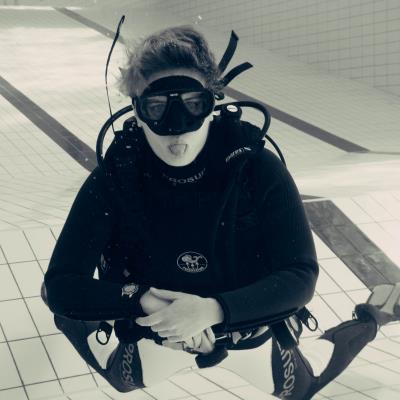 written by Susann Diercks
written by Susann Diercks
Does oxygen availability explain gigantism of polar marine animals?
Chapelle and Peck (1999) have shown that gigantism is part of a trend to large size at low temperature and that this is
also associated with reduced salinities. Although the Maximum Potential Size (MPS) is mostly dependent on the
oxygen availability, rather than temperature or salinity. Chapelle and Peck (1999) indicated that the reduction in
metabolism with temperature and the carrying capacity of circulating haemolymph are not major factors. They found
that the availability of oxygen might not be the ultimate selective pressure towards the size of species, but it limits to
maximum size for the largest species (MPS).Their experiment showed that amphipod MPS and environmental oxygen
concentration are linearly related.
Verberk and Atkinson (2013) state that the availability of oxygen is lower in polar waters, irrespective of the greater
oxygen solubility. This is because the dependency of the oxygen partial pressure is described as being the main driver
for gas exchange, not the concentration (Spicer and Gaston, 1999). The effect of decreased oxygen diffusivity at cold
temperatures exceeds the solubility increase (Verberk et al., 2011) and leads therefore to a lower availability of oxygen
in polar regions.
Following the argumentation of Verberk and Atkinson (2013), the larger body size of polar organisms is a feature to
cope with the respiratory problems due to the higher viscosity of colder water. When animal are bigger, the thickness
of the boundary layer is reduced, thus the capacity for oxygen uptake is increased.
References
Chapelle G., Peck L., 1999, 'Polar gigantism dictated by oxygen availability', Nature, 399, 114-115 Devasagayam TPA, Tilak JC, Boloor KK, Sane Ketaki S, Ghaskadbi Saroj S, Lele RD, 'Free Radicals and Antioxidants in Human Health: Current Status and Future Prospects', Journal of Association of Physicians of India (JAPI), 2004, 52, 796
Fridovich I., 1998, 'Oxygen toxicity: A radical explanation', The Journal of Experimental Biology, 201, 1203 – 1209
McCord J., 2000, 'The Evolution of Free Radicals and Oxidative Stress', The American Journal of Medicine, 108, 652 - 659
Rahman K., 2007, 'Studies on free radicals, antioxidants, and co-factors', Clinical Interventions in Aging, 2
Spicer J., Gaston K., 1999, 'Amphipod gigantism dictated by oxygen availability?', Ecology Letters, 2, 397 – 403
Verberk W., Atkinson D., 2013, 'Why polar gigantism and Palaeozoic gigantism are not equivalent: effects of oxygen and
temperature on the body size of ectotherms', Functional Ecology, 27, 1275 – 1285
Verberk W., Bilton D., Calosi P., Spicer J., 2011, 'Oxygen supply in aquatic ectotherms: partial pressure and solubility together explain biodiversity and size patterns', Ecology, 92, 1565 - 1572

Load more comments